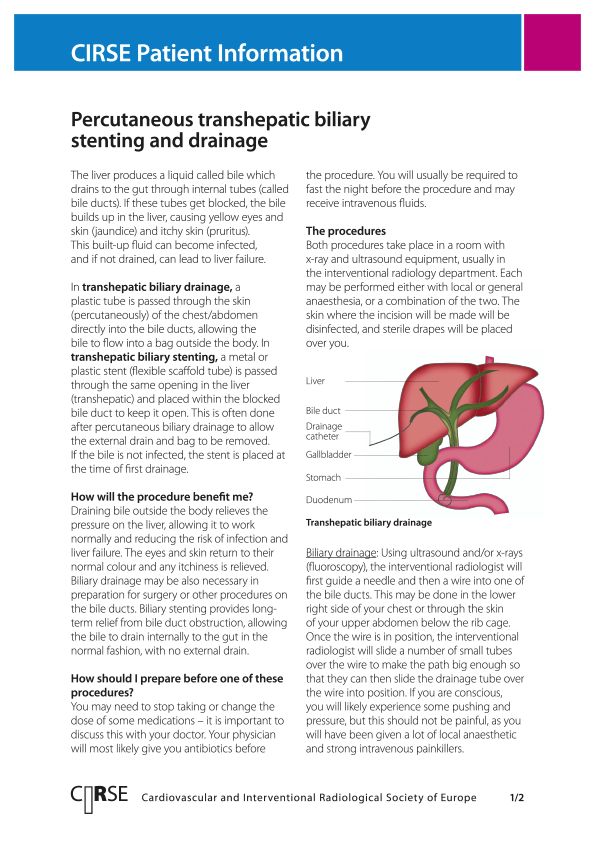Symptoms
Patients often experience symptoms such as fever, abdominal pain in the upper right side, jaundice and nausea. Less frequent symptoms include itching and vomiting.
Diagnosis
Specific blood tests can usually rule out certain conditions, such as an inflammation of the gallbladder, infection of the bile duct and an increased level of waste product from the liver, liver enzymes, and alkaline phosphatase. Any of these may indicate a loss of bile flow.
Several imaging techniques, including ultrasound, MRI and CT, can be used to diagnose biliary duct obstruction.
Treatment
Treatments for biliary duct obstruction include surgery, imaging and interventional radiology. An interventional radiologist may perform a biliary dilation through the skin and insert a stent, a small mesh tube, which can offer security in the management of biliary obstructions.

